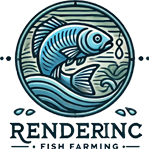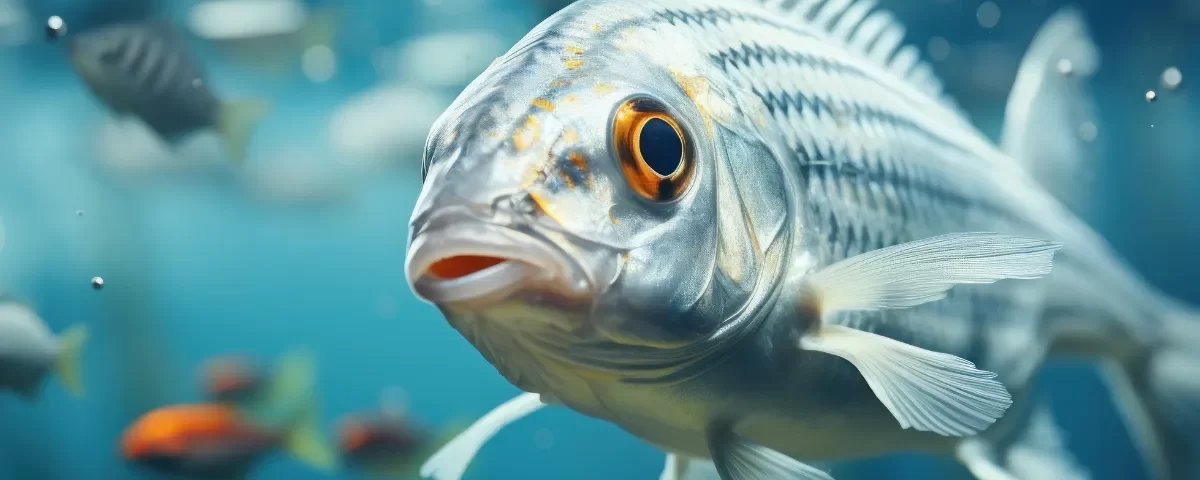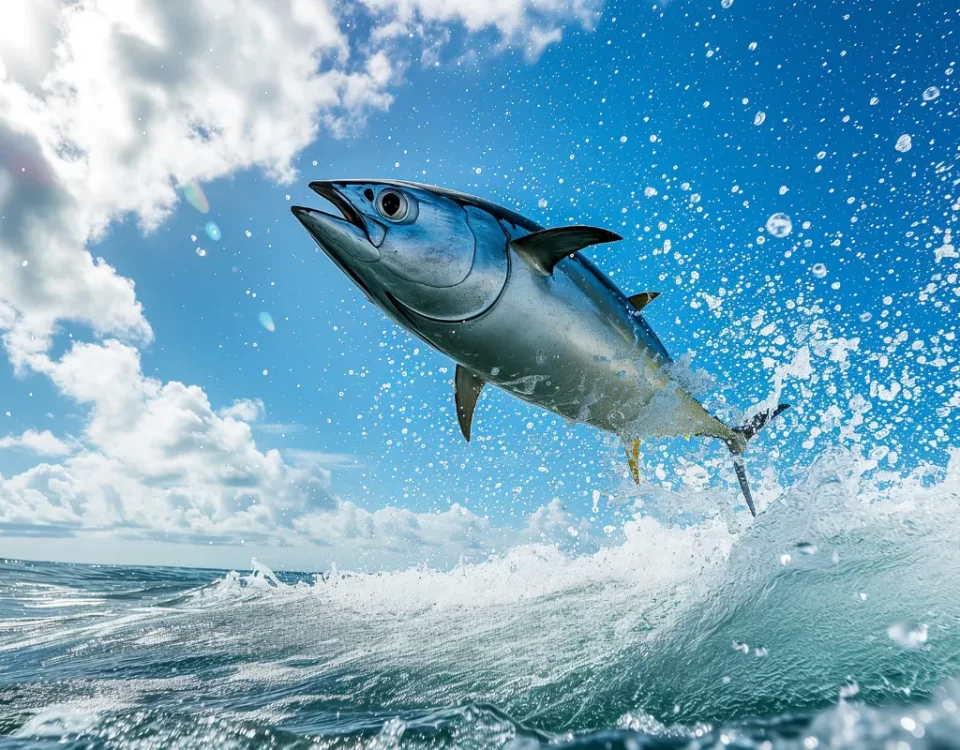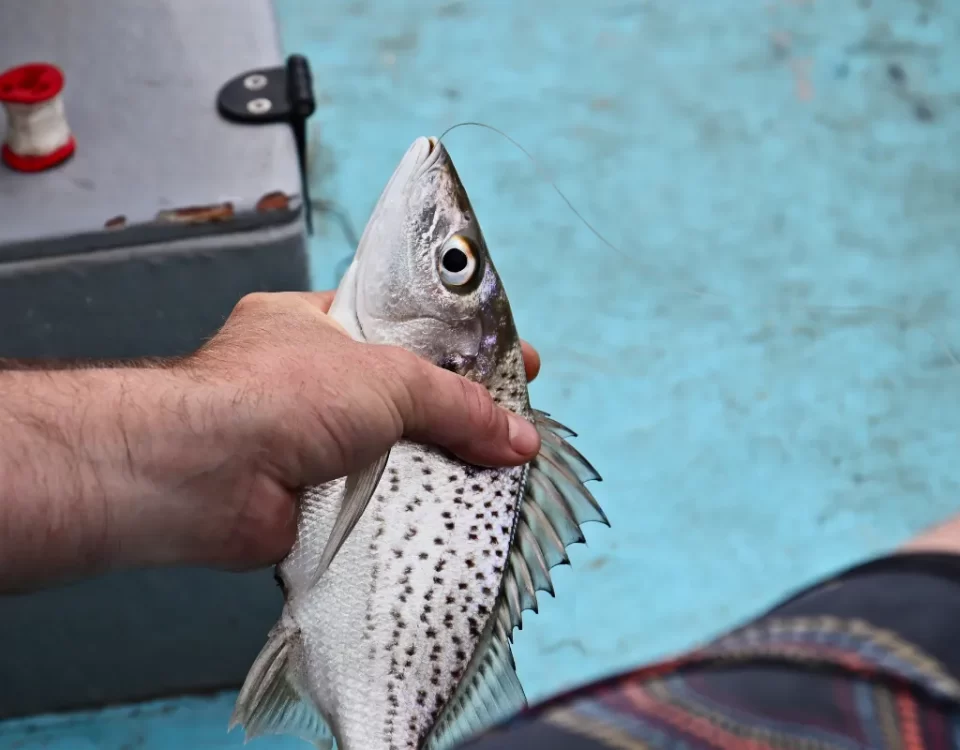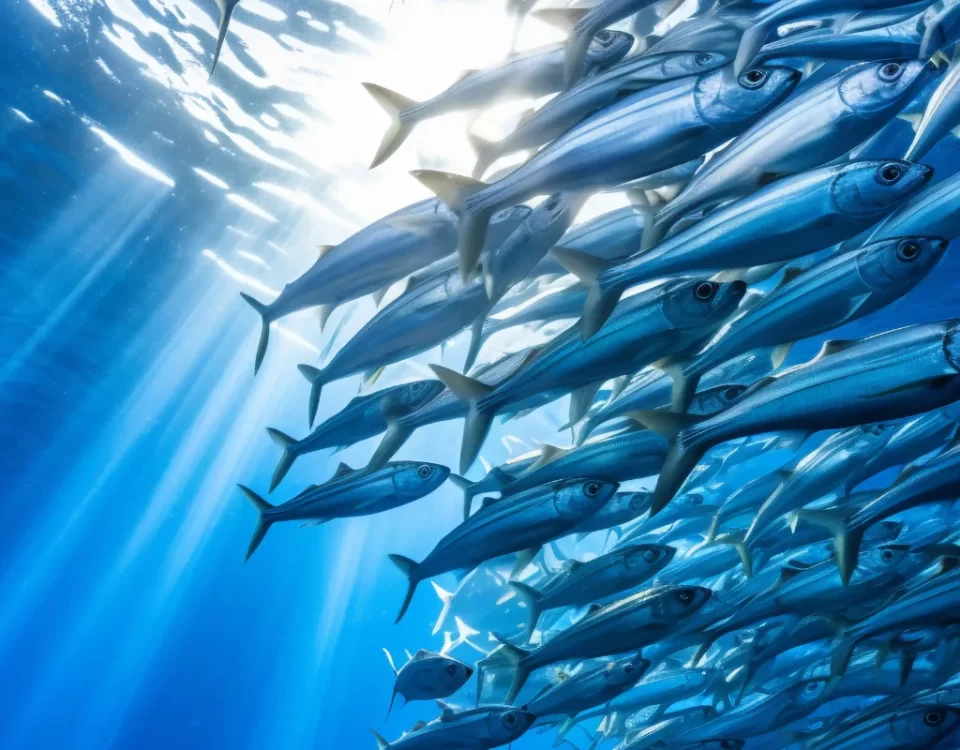How to Reduce Mortality Rates in Aquaculture

How to Minimize Water Usage in Fish Farming
setembro 8, 2024
The Ultimate Beginner’s Guide to Fish Farming
setembro 10, 2024In the realm of aquaculture, where the delicate dance of nurturing marine life for human consumption unfolds, there exists a pressing need to address the alarming issue of mortality rates. The significance of reducing mortality rates in aquaculture cannot be overstated, as it not only impacts the economic viability of the industry but also raises questions about sustainability and ethical stewardship.
The problem at hand is multifaceted, with mortality rates in aquaculture presenting a formidable challenge to fish farmers worldwide. The loss of aquatic life due to various factors such as disease outbreaks, inadequate water quality, and stress can have a profound impact on the bottom line of aquaculture operations. Furthermore, high mortality rates can tarnish the reputation of a farm and erode consumer trust in the industry as a whole.
In this article, we will delve into a range of strategies aimed at mitigating mortality rates in aquaculture. From improving husbandry practices and implementing biosecurity measures to exploring innovative technologies and nutritional management, these strategies offer a ray of hope for aquaculture practitioners seeking to navigate the turbulent waters of mortality reduction. By examining these key approaches, we aim to equip fish farmers with the knowledge and tools necessary to foster a healthier, sustainable, and prosperous aquaculture industry.
Understanding Mortality Rates in Aquaculture
Aquaculture, the practice of cultivating aquatic organisms for food or other resources, is crucial in meeting the growing global demand for seafood. However, high mortality rates pose a significant challenge in the aquaculture industry. In this section, we delve into the factors influencing mortality rates in aquaculture, the current statistics, and ways to address this issue.
Definition of Mortality Rates in Fish Farming
Mortality rates in the context of fish farming refer to the percentage of fish that die during a specific period in relation to the total population. Understanding and monitoring mortality rates are essential for assessing the overall health and welfare of the aquaculture system. High mortality rates can result in economic losses for farmers and impact the sustainability of the operation.
Factors Influencing Mortality Rates
Several factors can influence mortality rates in aquaculture. Water quality plays a crucial role, as poor water conditions can stress the fish, making them more susceptible to diseases and reducing their immune response. Additionally, inadequate nutrition can weaken the fish’s health, leading to higher mortality rates. Disease outbreaks are another significant factor that can decimate fish populations if not properly managed.
Current Trends and Statistics
According to recent data, mortality rates in aquaculture vary depending on the species being farmed and the farming practices employed. For example, shrimp farming may have higher mortality rates compared to salmon farming due to different susceptibility to diseases. Globally, mortality rates in aquaculture have been declining in some regions due to improved management practices and technology adoption. However, challenges persist, especially in developing countries where access to resources and expertise is limited.
Addressing High Mortality Rates
To reduce mortality rates in aquaculture, farmers can implement various strategies including regular monitoring of water quality, implementing biosecurity measures to prevent disease outbreaks, optimizing feed formulations for proper nutrition, and investing in training and education for sustainable farming practices. By addressing the underlying factors contributing to high mortality rates, the aquaculture industry can improve productivity, enhance sustainability, and meet the increasing demand for seafood.
Importance of Reducing Mortality Rates
In the realm of aquaculture, the importance of reducing mortality rates cannot be overstated. Not only does high mortality negatively impact the economic viability of fish farms, but it also has far-reaching environmental and ethical implications. Understanding the multifaceted significance of lowering mortality rates is crucial for the sustainable development of the aquaculture industry.
Economic Impact on Aquaculture Industry
High mortality rates in aquaculture operations can be financially devastating for fish farmers. Lost stock represents a direct loss of investment, as resources spent on feed, labor, and infrastructure do not yield the anticipated returns. Moreover, frequent mortalities can disrupt production schedules and lead to fluctuating market prices, ultimately affecting the profitability of fish farming enterprises. By improving fish health and reducing mortality rates, farmers can enhance their economic stability and ensure the long-term sustainability of their operations.
Environmental Implications of High Mortality Rates
Beyond the economic sphere, the environmental repercussions of high mortality rates in aquaculture are significant. Excessive mortalities can result in the accumulation of organic matter, such as uneaten feed and fish excrement, in water bodies. This can lead to eutrophication and oxygen depletion, causing harm to aquatic ecosystems and threatening wildlife biodiversity. By addressing mortality rates through better management practices and health protocols, fish farmers can contribute to environmental conservation and reduce their ecological footprint.
Ethical Considerations for Improving Fish Welfare
Improving mortality rates in aquaculture is not just a matter of economic and environmental concern but also an ethical imperative. Fish welfare is a critical aspect that cannot be overlooked, as suffering and stress experienced by farmed fish due to poor living conditions and health issues raise serious ethical questions. By taking proactive measures to enhance fish welfare, such as ensuring adequate housing and nutrition, minimizing disease outbreaks, and implementing humane handling practices, fish farmers can uphold ethical standards and demonstrate their commitment to compassionate farming practices. Evidently, reducing mortality rates in aquaculture is a complex yet essential endeavor that entails considerations ranging from financial sustainability to environmental stewardship and ethical consciousness. By recognizing the interconnectedness of these factors and implementing holistic strategies, the aquaculture industry can move towards a more resilient and responsible future.
Best Practices for Improving Fish Health
Maintaining optimal fish health is crucial in aquaculture to minimize mortality rates and ensure a successful operation. Implementing a comprehensive health management plan is key to achieving this goal. This plan should include regular health assessments, early disease detection protocols, and a swift response mechanism in case of any health issues. By proactively addressing potential health concerns, farmers can mitigate risks and promote the overall well-being of their fish population.
Implementing a Comprehensive Health Management Plan
A robust health management plan begins with thorough record-keeping of fish health observations and treatment histories. By documenting these details, farmers can track patterns, identify potential stressors, and make informed decisions to address recurring health issues. Regular health checks by trained professionals or veterinarians can help in early disease detection, allowing for timely interventions to prevent disease outbreaks and reduce mortality rates. Additionally, implementing vaccination programs for high-risk diseases can further strengthen the immune system of the fish and enhance overall health resilience.
Monitoring Water Quality and Environmental Conditions
Water quality plays a pivotal role in fish health and well-being. Regular monitoring of water parameters such as temperature, pH levels, dissolved oxygen, and ammonia levels is essential to ensure a suitable environment for fish growth. Sudden fluctuations in water quality can stress the fish and make them more susceptible to diseases. By maintaining stable and optimal water conditions, farmers can promote healthy fish growth and reduce the likelihood of mortality due to environmental stressors.
Disease Prevention Through Biosecurity Measures
Biosecurity measures are critical in preventing the introduction and spread of diseases within aquaculture facilities. Implementing strict biosecurity protocols, such as disinfection procedures, restricted access policies, and quarantine measures for new fish arrivals, can significantly reduce the risk of disease transmission. By screening all incoming fish for pathogens and isolating sick individuals promptly, farmers can contain potential disease outbreaks and safeguard the health of the entire fish population.
Proper Nutrition and Feeding Practices
A well-balanced diet is essential for maintaining optimal fish health and immune function. Providing nutrient-rich feed tailored to the specific nutritional needs of the fish species can enhance growth rates, improve disease resistance, and reduce mortality rates. Overfeeding or underfeeding can lead to health issues such as malnutrition, obesity, or nutrient deficiencies, impacting the overall well-being of the fish. By adhering to feeding guidelines, monitoring feed conversion ratios, and adjusting feeding practices based on fish growth stages, farmers can promote healthy growth and minimize health risks in their aquaculture operations.
Innovative Technologies in Aquaculture
In this modern era, technology is playing an increasingly crucial role in the realm of aquaculture, offering innovative solutions to reduce mortality rates and enhance overall farm productivity. From intelligent monitoring systems to sophisticated genetic improvement programs, advances in technology are revolutionizing the way fish farms operate.
Role of Technology in Reducing Mortality Rates
One of the primary ways technology is contributing to the reduction of mortality rates in aquaculture is through the implementation of advanced monitoring systems. These systems allow farmers to monitor key water parameters such as temperature, oxygen levels, and pH in real-time, enabling them to detect any deviations that could be harmful to the fish. By maintaining optimal water conditions, farmers can significantly lower the risk of disease outbreaks and mortality among their stock.
Use of Sensors for Monitoring Water Parameters
Sensors play a vital role in ensuring the health and well-being of fish in aquaculture settings. Sensors can continuously measure essential water parameters, providing valuable data to farmers. For instance, dissolved oxygen sensors help farmers understand oxygen levels in the water, preventing hypoxia, a common cause of mortality in fish. By utilizing sensors effectively, farmers can proactively address potential risks and optimize conditions for fish growth and survival.
Introduction of AI and Machine Learning in Fish Health Management
The integration of artificial intelligence (AI) and machine learning technologies is transforming fish health management in aquaculture. These cutting-edge tools can analyze vast amounts of data to identify patterns and trends that might indicate potential health issues in fish populations. By harnessing the power of AI, farmers can make informed decisions regarding feed management, disease prevention, and treatment strategies, ultimately reducing mortality rates and improving overall farm efficiency.
Benefits of Genetic Improvement Programs in Aquaculture
Genetic improvement programs have become a game-changer in aquaculture, offering significant benefits in terms of disease resistance, growth rates, and overall survival rates of fish stocks. Through selective breeding and genetic selection, farmers can develop strains of fish that exhibit desirable traits, such as disease resistance and faster growth. By incorporating genetic improvement programs into their operations, aquaculture farmers can enhance the resilience of their fish populations and reduce mortality rates, ultimately leading to more sustainable and profitable farms.
Case Studies: Successful Strategies in Reducing Mortality Rates
Aquaculture farms around the world have been striving to reduce mortality rates through innovative practices and strategic approaches. Let’s delve into a few exemplary case studies that showcase successful strategies in this endeavor.
Integrated Multi-Trophic Aquaculture (IMTA) System at Blue Ocean Farms
Blue Ocean Farms, located off the coast of Norway, has implemented an Integrated Multi-Trophic Aquaculture (IMTA) system to minimize mortalities in their salmon and shellfish production. By cultivating multiple species in proximity, they have created a symbiotic ecosystem where the waste from one species serves as nutrients for another. This not only improves water quality but also reduces stress on the fish, leading to lower mortality rates.
Disease Management Techniques at AquaLuxe Aquafarm
AquaLuxe Aquafarm in Thailand has significantly reduced mortality rates by adopting stringent disease management techniques. Through regular health screenings, quarantine protocols, and optimized feeding practices, they have effectively controlled the spread of pathogens and minimized disease outbreaks among their aquatic stock. This proactive approach has not only saved lives but also improved overall farm productivity.
Precision Feeding Technology at Oceanside Fisheries
Oceanside Fisheries in Canada has revolutionized their operations by implementing precision feeding technology to reduce mortalities in their trout farming. By utilizing automated feeding systems that dispense precise amounts of feed based on real-time data analytics, they have been able to prevent overfeeding and underfeeding, which are common causes of mortality in aquaculture. This meticulous approach has resulted in healthier fish and decreased mortality rates.
Environmental Monitoring and Control at Coral Coast Aquaculture
Coral Coast Aquaculture in Australia has achieved remarkable success in mortality reduction by focusing on environmental monitoring and control. By closely monitoring water quality parameters such as temperature, oxygen levels, and pH, they have created an optimal environment for their marine species to thrive. This attention to detail has not only decreased stress-related mortalities but also enhanced the overall well-being of the aquaculture ecosystem.
In conclusion, these case studies highlight the diverse strategies and approaches that aquaculture farms can adopt to effectively reduce mortality rates. By learning from successful practices and implementing innovative techniques, aquafarmers can strive towards sustainable and thriving operations.
Regulatory Aspects and Industry Collaboration
In the realm of aquaculture, regulations play a pivotal role in ensuring the health and well-being of farmed fish. Various regulations exist to monitor and control aspects such as water quality, disease management, and medication use in aquaculture facilities. These regulations often vary by region and are enforced by government agencies tasked with overseeing the aquaculture industry. For example, in the United States, the Food and Drug Administration (FDA) and the National Oceanic and Atmospheric Administration (NOAA) work together to establish and enforce regulations that govern fish health in aquaculture operations.
Collaboration among industry stakeholders, researchers, and government agencies is key to addressing the challenges associated with high mortality rates in aquaculture. By working together, these groups can share information, research findings, and best practices to improve fish health and overall farm success. Industry stakeholders can offer valuable insights from their on-the-ground experiences, researchers can provide scientific expertise, and government agencies can ensure that regulations are being adhered to and make informed policy decisions.
Industry collaboration can take many forms, such as joint research projects, knowledge-sharing initiatives, and regular communication channels. By fostering a culture of collaboration, the aquaculture industry can benefit from a continuous exchange of ideas and innovations that can lead to better health outcomes for farmed fish. Moreover, collaboration can help bridge gaps in knowledge and resources, ultimately leading to more sustainable aquaculture practices and reduced mortality rates.
To further promote better health and lower mortality rates in aquaculture, potential policy changes may be necessary. These changes could include updating existing regulations to reflect the latest scientific advancements, implementing mandatory reporting systems for disease outbreaks, and providing incentives for adopting best management practices. By aligning regulations with current research and industry needs, policymakers can create an environment that supports the long-term success and sustainability of aquaculture operations, ultimately reducing mortality rates and improving overall fish health.
Recap of Key Points
Throughout this article, we have delved into the critical issue of reducing mortality rates in aquaculture. We highlighted various factors that contribute to the loss of fish in fish farms, such as water quality, disease management, and stressors. By understanding these factors, aquaculture professionals can implement strategies to mitigate risks and enhance the overall well-being of their stock.
We discussed the significance of regular monitoring, maintaining optimal water parameters, and investing in high-quality feed to promote healthy growth and immunity in farmed fish. Additionally, proper stocking densities and avoiding overfeeding were emphasized as essential practices to reduce stress and improve survival rates. By following these guidelines, aquaculture practitioners can foster a more sustainable and efficient operation.
Call to Action
It is crucial for the aquaculture industry to prioritize efforts in reducing mortality rates among farmed fish. By implementing best practices and embracing technological advancements, stakeholders can work towards a future where fish farming is not only productive but also environmentally conscious. Collaboration among industry players, researchers, and policymakers is essential to drive progress in this vital area.
Aquaculture professionals are urged to remain vigilant and proactive in their approach, continuously seeking innovative solutions to address mortality challenges. By sharing knowledge, exchanging ideas, and engaging in ongoing dialogue, the industry can collectively raise standards and establish a benchmark for excellence in sustainable fish farming practices.
Final Thoughts
As we look ahead to the future of fish farming, it is evident that sustainable practices are paramount. With the global demand for seafood on the rise, the aquaculture industry plays a vital role in meeting this demand while preserving the health of our oceans. Embracing responsible methods that prioritize animal welfare, environmental stewardship, and resource efficiency will be key to ensuring the longevity and success of fish farming operations worldwide.
In conclusion, by taking proactive steps to reduce mortality rates in aquaculture, we not only safeguard the welfare of farmed fish but also contribute to a more sustainable and resilient industry. Let us strive towards a future where fish farming thrives in harmony with nature, setting a positive example for generations to come.

Michael Rivers is an experienced aquaculture enthusiast with over a decade of hands-on knowledge in fish farming and sustainable aquatic systems. Passionate about promoting eco-friendly practices, he shares his expertise on fish breeding, water management, and the latest advancements in aquaculture technology. Through his blog, Michael aims to help both beginners and seasoned fish farmers achieve success in their ventures while contributing to the growth of sustainable food production.
